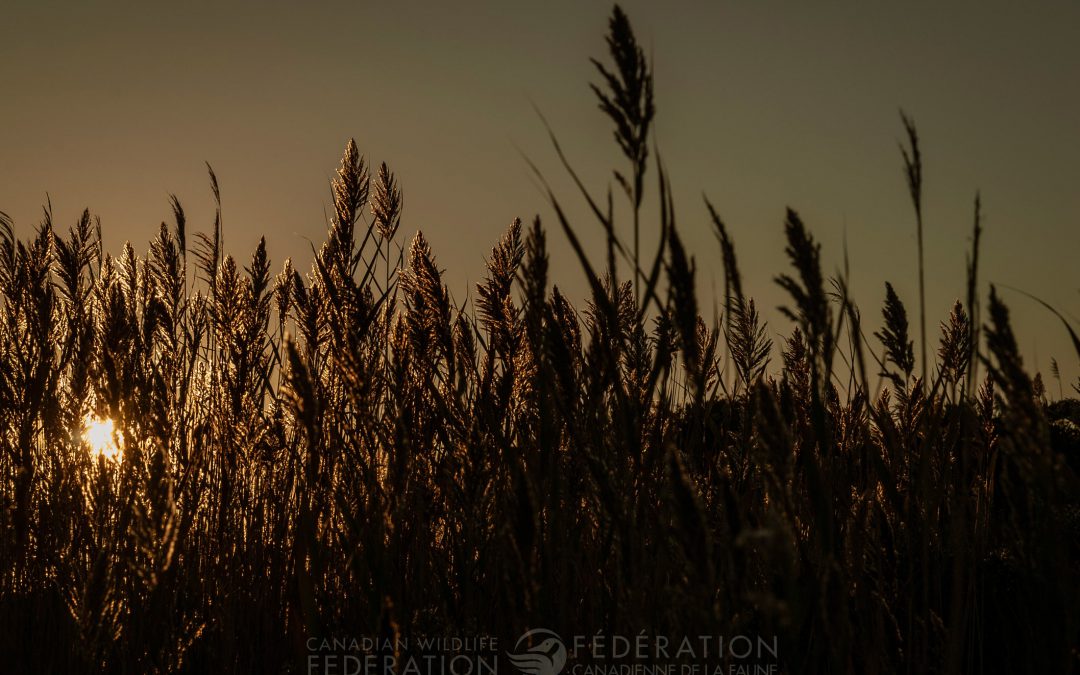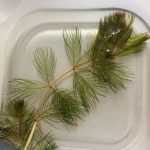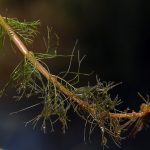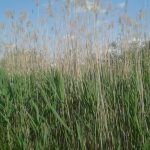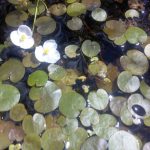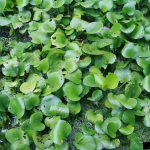Did you know that the second largest threat to biodiversity is invasive species?
That’s right after habitat loss.
Non-native species can come from other countries or from right here in Canada. And while some of these non-native species can actually be beneficial, some can be invasive — becoming predators, competitors, parasites, even diseases to our native wildlife. With few predators they can spread rapidly and can:
- Reduce biodiversity
- Disrupt food webs
- Degrade habitat
- Impact species health
- Interfere with our recreational activities
- Cause major economic damage
Once established, they are difficult to control or eradicate and their impacts are often irreversible.
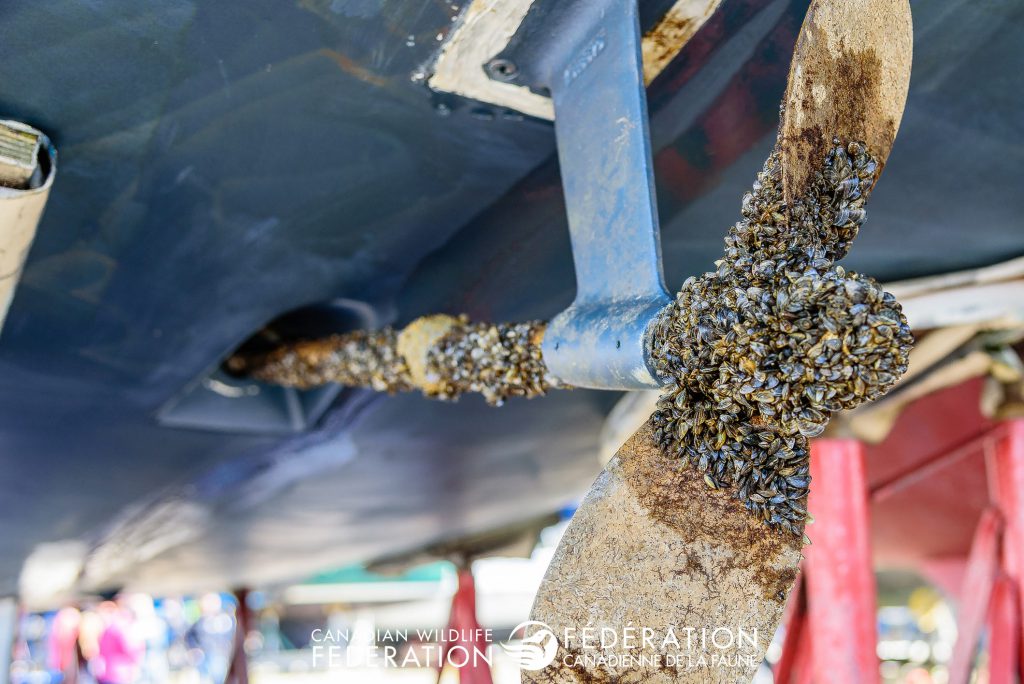
Boat covered in zebra muscles
How do they get here?
Sometimes species are brought to new areas on purpose but many times they arrive unintentionally. The main methods for the introduction of aquatic invasive species are:
- Recreational and commercial boating
- Shipping
- Aquarium and water garden trade
- Live fish food
- Use of live bait
- Float planes
- Scuba diving gear
- Canal and water diversions
- Unauthorized introductions
Is this invasive or a native look-alike?
Eurasian Water-milfoil
- Eurasian Water-milfoil by daniellestlouis
- Native Water-milfoil 2015 Steve Matson
Native to Europe, Asia and northern Africa, Eurasian Water-milfoil is thought to have arrived in North America either through the aquarium trade or the ballast water of ships. It is a perennial that forms dense underwater mats and prefers shallow water. When the plants decompose in the fall, it can greatly reduce water oxygen levels harming fish, it can interfere with recreational activities and can compete with native plants.
Eurasian Water-milfoil grows under water, has leaves that are arranged in whorls around the stem in groups of four or five, has leaves of 12 or more segments and it has tiny reddish flowers that bloom in late July/early August.
In comparison, our native Northern Water-milfoil has leaves with no more than 11 leaf segments.
Invasive Phragmites
- Invasive Phragmites Phragmites australis australi) by birds_bugs_botany
- Native Phragmites by samuelbrinker
Native to Eurasia, it isn’t known how Invasive Phragmites came to North America. It is a quickly spreading plant that releases toxins from its roots. It can reduce our native plant biodiversity, can lower water levels due to its fast growth and rapid rate of transpiration, can impact recreational activities, can be a fire hazard because of its dead stalks and provides inadequate habitat for wildlife.
Invasive Phragmites is tall — measuring up to 5 metres in height, grows in dense stands — up to 200 stems per square metre, has tan or beige stems at the base, bluish-green leaves and dense seed heads.
In comparison, Native Phragmites typically measures around 2 metres in height, has reddish-brown stems at the base, yellowish-green leaves and smaller seed heads.
European Frog-bit
- European Frog-Bit by brentturcotte
- North American Frog-bit
Native to Europe and parts of Asia and Africa, European Frog-bit was intentionally brought to Ottawa for potential commercial use as an ornamental plant. It has since spread forming its characteristic dense, floating mats. This invasive plant can reduce oxygen levels when it decomposes in the fall, crowd out native plants reducing biodiversity and interfere with recreational activities.
European Frog-bit produces a single white flower with a yellow centre, has three rounded petals and round or heart shaped leaves that are between 2.5-5 centimetres wide. The leaves can float on water thanks to a spongy coating found only along the middle vein of the leaf.
In comparison, North American Frog-bit has a spongy coating along the complete bottom of the leaf.
Other invasive species to watch out for!
Unfortunately, there are too many to list, but here are just a few more aquatic invasive species to watch out for:
You can help prevent the spread!
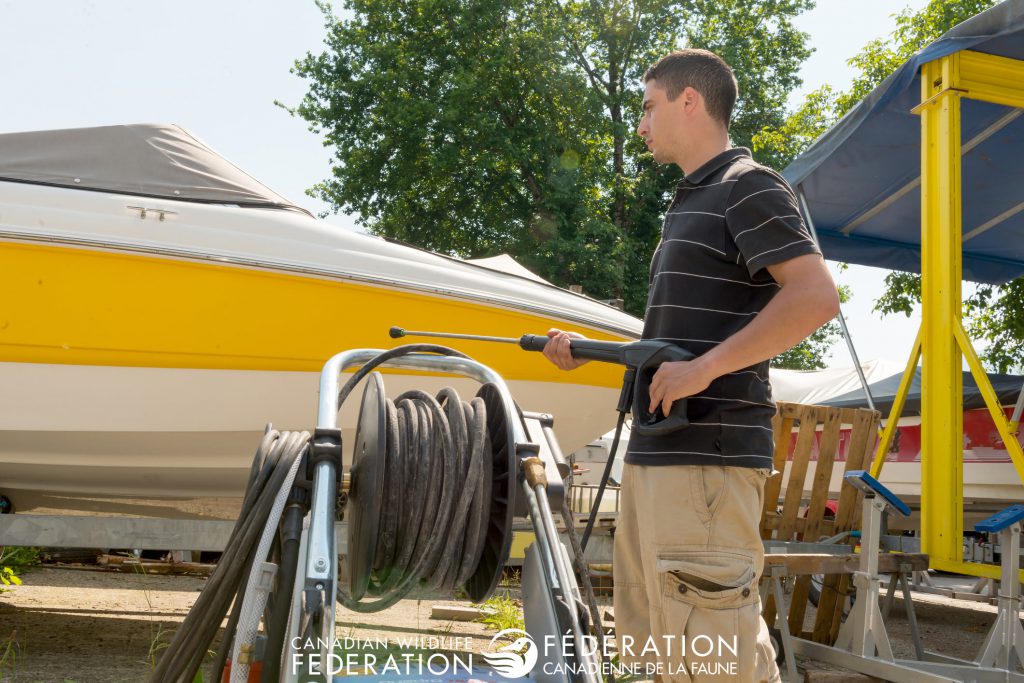
Remove any mud, sand, plants, mussels and anything else suspicious before leaving the water body.
Clean, Drain and Dry
Your boat, trailer and gear — even waders! Remove any mud, sand, plants, mussels and anything else suspicious before leaving the water body. Also, before you leave, drain all water on land from all your equipment and gear including the watercraft itself, the motor, bilge and wells, bait buckets, tackle and trailer. Use hot water to rinse, scrub or pressure wash your boat — including canoes and kayaks — staying away from waterbodies, ditches and storm drains. Completely dry your boat and gear and allow compartments to air dry before entering another water body.
Inspect scuba gear equipment, removing any visible mud, plants and animals before leaving shore. All equipment and suits should be completely dry before going to another waterbody.
Float planes should be inspected and aquatic plants removed from the floats, water rudders as well as wires and cables. If in waters with zebra mussels, spray with a high pressure washer and dry all parts in the sun for a minimum of five days.
- Bait buckets should be emptied on land
- Do not release live fish, plants, live bait and aquarium pets into waterbodies
- To report an invasive species sighting, please visit the Canadian Council on Invasive Species website

